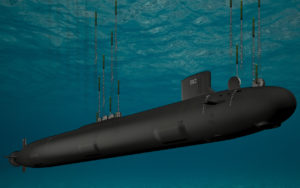
A top Navy official said the service is on track to deploy hypersonic weapons to a surface ship then a submarine later this decade, as long as they restart testing and finish an underwater test facility. “We are on a path and we’ve been hitting our milestones. We’ve been doing everything that we told Congress we were going to do. We’re going to deploy Conventional Prompt Strike,” which the Army calls the Long-Range Hypersonic Weapon, “or the all-up round. It’s…

 By
By 











